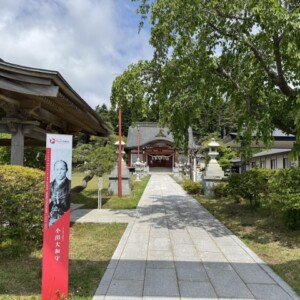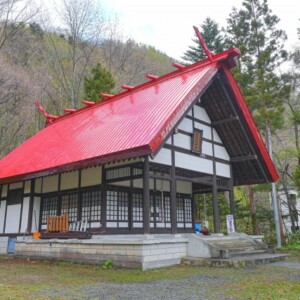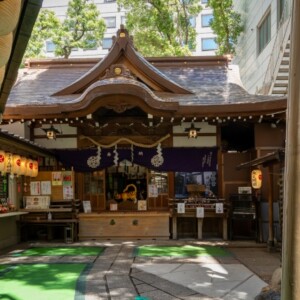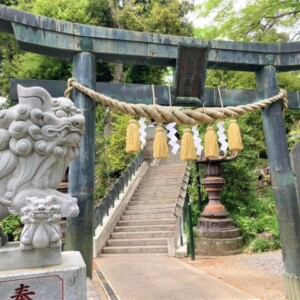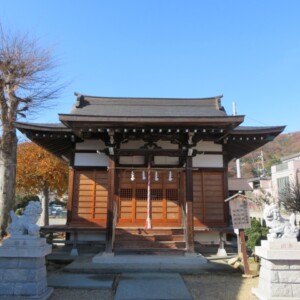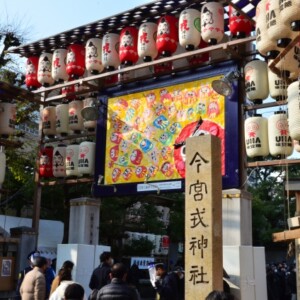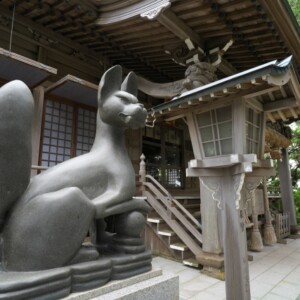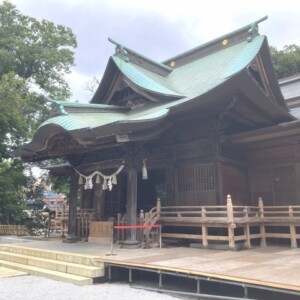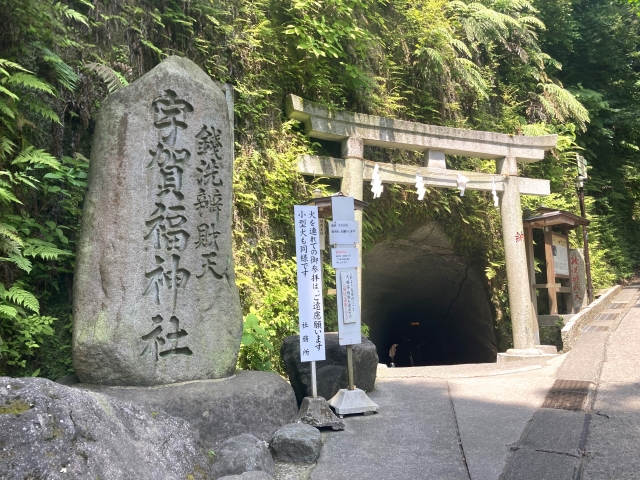
Zenarai Benzaiten Ugafukujinja|Complete guide to the history, highlights, and worship information of this money-loving shrine associated with Minamoto no Yoritomo
Zenarai Benzaiten Ugafuku Shrine, located in the mountains of Sasuke, Kamakura City, Kanagawa Prefecture, is an old shrine that attracts worshippers from all over Japan as a power spot for increasing money luck. It is said that if you wash your money in the holy water in the inner shrine, it will be returned many times over, attracting the faith of those who wish for prosperous business and improved financial fortune.
Outline and basic information about Zenarai Benzaiten Ugafuku Shrine
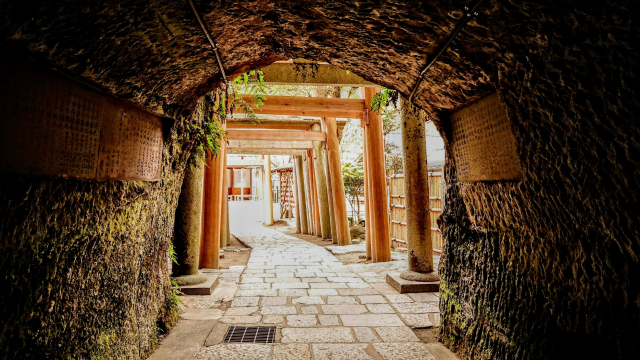
Zenarai Benzaiten Ugafukujinja Shrine is located in the deepest part of Sasukegaya Valley in Sasuke, Kamakura City, and is situated in a mysterious area known as “hidden village” surrounded by ridges on three sides. Although its official name is “Zenarai Benzaiten Ugafukujinja,” it is known as “Zenarai Benzaiten” and is one of the best money-luck shrines in Japan.
The shrine grounds have a unique rock cave entrance, and a sacred space opens up as one exits the cave. This special topography is one of the reasons why the shrine has long been believed to be a place where the god of fortune resides. Today, it is a concurrent shrine of Suwa Shrine in Wakamatsu-cho, Yokosuka City, and is crowded with many worshippers every day.
History and Origin
There is an interesting legend about Minamoto no Yoritomo, the founder of the Zenarai Benzaiten Ugafukujinja Shrine. In the late Heian period (794-1185), the world was suffering from war and famine. Minamoto no Yoritomo was praying to the gods and Buddha day and night to save people’s lives, when an old man appeared to him in a dream on the night of the snake day in the month of the snake in the first year of Bunji (1185), the year of the snake.
The old man was Ugafukujin, who told Yoritomo that if he made offerings to the gods and Buddha in the water that gushed out in this place (the valley in the northwest), a world of peace would come. When Yoritomo searched for the place as he had been told, he indeed found clear spring water, and he built a shrine dedicated to Ugafukujin there, which is said to be the origin of the Zenarai Benzaiten Ugafukujin Shrine.
Later, Hojo Tokiyori, the fifth regent of the Kamakura shogunate, encouraged people to visit the shrine, and the area came to attract many devotees. Originally a branch of Yasaka Shrine in Ougigaya, the shrine became independent in 1970 and has continued its history as the present-day Zenarai Benzaiten Ugafuku Shrine.
Deities and Benefits
The main deity of Zenarai Benzaiten Ugafuku Shrine is Princess Ichikishimahime no Mikoto. Known as the god of water, Ichikishimahime-no-Mikoto is the same goddess as Benzaiten, and is believed to be beneficial for fortune, entertainment, and learning.
The deity’s body is shaped like a snake with a human head, and is revered as a water goddess. This special shape represents the characteristics of Ugajin, a unique form of worship that combines the belief in Benzaiten and Ugajin.
The shrine’s most distinctive feature, “sen-arai,” is the belief that washing and purifying money in the sacred water of the inner shrine will improve one’s financial fortune. This sacred water is one of the “Five Famous Waters of Kamakura” and has been considered sacred since ancient times. Worshippers from all over Japan come to the shrine to pray for prosperous business, money, and financial fortune, and the shrine is especially crowded on the day of the snake.
Zenarai Benzaiten Ugafuku Shrine Highlights and Characteristics
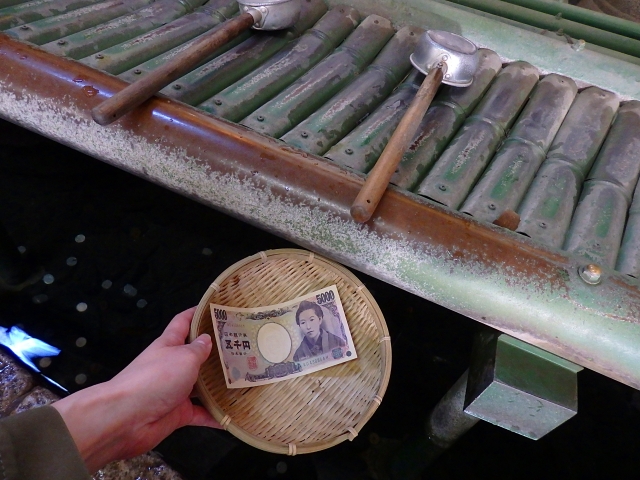
Zenarai Benzaiten Ugafuku Shrine welcomes visitors with its unique architecture and natural environment that sets it apart from other shrines. The entrance to the shrine, located halfway up the mountain, is a mysterious tunnel carved out of the rock face, creating an atmosphere like an entrance to another world.
The shrine grounds are located in the innermost part of Sasukegaya, in a depression surrounded on three sides by ridges, and have long been called “hidden village” and believed to be a place where blessed deities live. This topographical feature gives the entire shrine a mysterious and solemn atmosphere.
Entrance to the rock cave and approach to the torii gate
The most striking feature of Zenarai Benzaiten Ugafuku Shrine is the entrance tunnel carved out of the rock face. The entrance to this rock cave is positioned as a special place where worship at the shrine begins, symbolizing the boundary from the mundane world to the Shinto realm.
Passing through the tunnel, visitors will first see a hand-watering basin, followed by a beautiful pathway with many layers of torii gates dedicated by worshipers. These torii gates are dedicated by those who have received blessings from the shrine as a token of their gratitude, and the sheer number of these gates is a testament to the depth of faith in the shrine.
Lanterns are set up along the approach to the shrine, and especially on weekends and days when there are many visitors, the lanterns are lit, creating a fantastic atmosphere. The rows of torii gates are a popular place for visitors to take pictures, as they are known as a path of good luck.
Sacred water and a place for washing money at Okumiya Shrine
The Okumiya, the core of the shrine, is a sacred space set inside a cave. The fresh water that bubbles up here is the very same sacred water that Minamoto no Yoritomo (the first emperor of Japan) had prayed for in his dream, and has been carefully protected as one of the “Five Famous Waters of Kamakura” for centuries.
The “sen-arai,” or washing and purifying of money with this sacred water, is the most distinctive feature of the shrine. Visitors carefully wash their money in the inner shrine using candles and incense, which can be purchased at the shrine office, and a colander, which can be borrowed. The belief is that if the washed money is used carefully, it will be returned many times over.
The interior of the Okumiya cave is surrounded by natural rock walls, and the sen-washing ceremony is performed in a solemn atmosphere. Inside the cave, there is a water bowl in the shape of a dragon god, and it is expected that being purified with this sacred water will bring stronger blessings.
Five shrine pavilions on the temple grounds
There are five shrine pavilions enshrining different deities within the grounds of Zenarai-benzaiten Ugafukujinja. It is believed that by visiting each of these shrines in turn, one will receive deeper blessings.
The main shrine enshrines the deity Ichikishimahime no Mikoto and is the focal point of worship. In the other shrine pavilions, the Seven Deities of Good Fortune and various other gods and Buddha are enshrined, responding to diverse wishes such as prosperity in business, academic achievement, and health and longevity.
The architectural style and layout of each shrine pavilion skillfully utilizes the mountainous terrain and conveys to the present day the beauty of ancient shrine architecture that emphasizes harmony with nature. In front of the shrine pavilions are placed komainu (guardian dogs) and sacred beasts, each with a different characteristic, each with a unique expression watching over visitors.
Guide to Worship and Visiting the Shrine
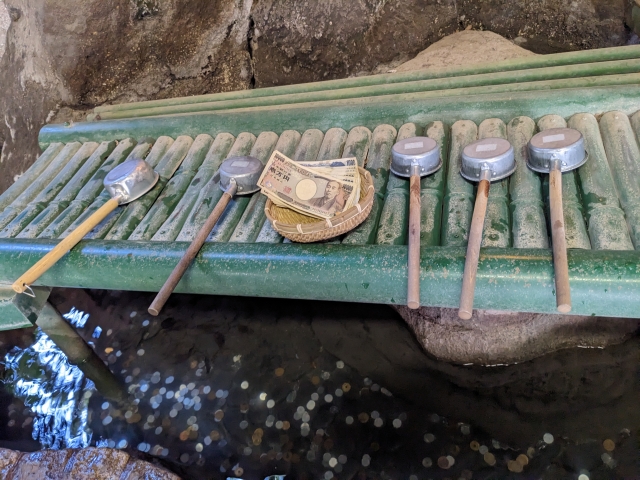
Worship at the Zenarai Benzaiten Ugafuku Shrine has a unique etiquette that differs from that of ordinary shrine visits. In particular, it is believed that the correct procedure for the senarai ritual will bring greater blessings. It is important for worshippers to understand the etiquette beforehand and to approach the shrine with a sense of reverence.
The shrine can be visited throughout the year, but the day of the snake is especially popular, as it is considered a day of deep connection with Ugafukujin. Seasonal festivals and annual events also provide opportunities to deeply appreciate the shrine’s charms.
Worship Etiquette and Manners
Worship at Zenarai Benzaiten Ugafuku Shrine begins at the entrance to the rock cave. First, pass through the tunnel and purify yourself at the hand-watering basin before proceeding along the approach to the torii (gateway to the shrine). At the shrine office, obtain the three sets of candles, incense sticks, and colander needed for worship. Candles and incense cost 100 yen per bundle, and colanders can be borrowed free of charge.
Praying at the main shrine is done in the same manner as at a regular shrine, i.e., two claps and one bow. Afterwards, proceed to the Okumiya Shrine for washing the money. At the Okumiya, visitors first greet the deity by lighting candles and burning incense. Candles bring light and incense sticks are important items that are believed to ward off evil spirits.
When washing money, money is placed in a borrowed colander, and sacred water is gently poured over the money to purify it. There is no fixed amount of money to be washed, but it is important to do so carefully and wholeheartedly. It is believed that if the washed money is used up carefully, it will be returned many times over. After visiting the shrine, do not forget to return the colander to the designated place.
Annual and Seasonal Events
Various festivals are held throughout the year at Zenarai Benzaiten Ugafuku Shrine. The most important festivals are the Chu-matsuri on the first snake day of April and the Grand Festival on the first white dew day of September. These festivals feature special rituals and attract many more worshippers than usual.
The New Year’s Day Festival on January 1 is an important event that celebrates the beginning of the New Year, and the temple grounds are crowded with people praying for prosperous business and good fortune for the year ahead. This time of year also attracts many visitors for Hatsumode, a special experience to welcome the New Year in the sacred atmosphere of the shrine.
The day of the snake every month is considered particularly important as a day of deep connection with Ugafukujin, and worship on this day is believed to bring greater blessings than usual. In particular, the day of the snake, which occurs six times a year, is considered to be the most beneficial day of the month for Benzaiten, and is a special day that attracts many worshippers from all over the country.
Red Seal and Good Luck Charm Information
At the Zenarai Benzaiten Ugafuku Shrine, visitors can obtain a red seal to commemorate their visit to the shrine. Goshuin” seals have long been used as a sign of visitation to shrines, and the name of the shrine and the date of visit are written in beautiful brush strokes. Bring your own red seal book or purchase one from the shrine to receive a red seal.
There are many good luck charms available that are specially designed to improve one’s financial fortune and business prosperity. You can choose from a variety of types, including the unique Zenarai-benten money and business prosperity charms, as well as small charms that can be carried in a wallet. These amulets are believed to contain the spiritual power of the shrine and help improve one’s financial fortune in daily life.
The shrine also offers an unusual omikuji called a fan omikuji. This fan-shaped omikuji contains specific advice on money and business, and is a popular item among worshippers.
Access and Usage Information
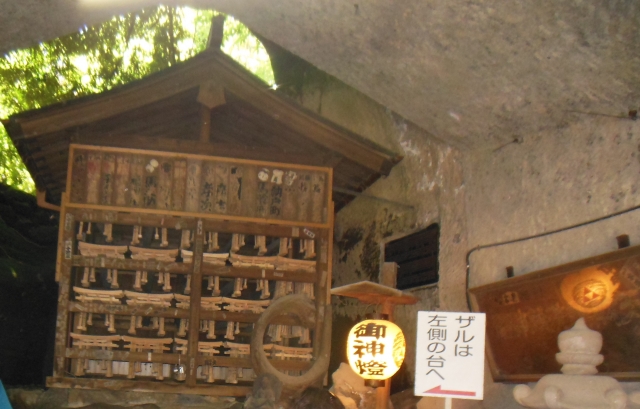
Zenarai Benzaiten Ugafuku Shrine is located within walking distance of Kamakura Station, but since it is located in a mountainous area, it is recommended to check the route beforehand. The area around the shrine is a quiet path through a residential area, allowing visitors to feel the rich nature of Kamakura as they make their way to the shrine.
The hours of worship are from 8:00 a.m. to 4:30 p.m., and the shrine is open all year round. However, it is recommended to enter the museum by 4:00 p.m., so it is important to plan your visit well in advance.
Access
The nearest stations to Zenarai Benzaiten Ugafuku Shrine are Kamakura Station on the JR Tokaido Main Line, Yokosuka Line, or Enoshima Electric Railway. It is about a 20-25 minute walk from the West Exit of Kamakura Station. Be careful not to make a mistake as it is in the opposite direction from Komachi-dori Street and Tsurugaoka Hachimangu Shrine at the East Exit.
After exiting the West Exit of Kamakura Station, first head in the direction of Kamakura City Hall. Turn right at the “Sasuke 1-chome” intersection, which can be seen as you pass in front of City Hall, and continue on through the residential area of Sasuke. There are signs posted along the way, so if you follow the signs, you will arrive there without getting lost.
The path before the entrance to the shrine slopes slightly, so we recommend that you wear comfortable walking shoes. Nearby is Genjiyama Park, where you can see a statue of Minamoto no Yoritomo, who is closely associated with Zenarai Benzaiten, so it is a good idea to visit there as well.
It is also accessible by car, but driving should be done with caution due to the narrow width of some roads. Public transportation is recommended, but if you must drive, please drive carefully.
<Address> 2-25-16 Sasuke, Kamakura-shi, Kanagawa-ken 248-0017
Hours of Operation, Fees, and Parking
The Zenarai Benzaiten Ugafuku Shrine is open from 8:00 am to 4:30 pm. Although the shrine is open to visitors all year round, it is recommended that visitors enter by 4:00 p.m., so it is advisable to allow plenty of time for your visit. Especially in winter, the sun sets early, so it is safe to visit early in the day.
There is no set fee for visiting the temple. Please pay the amount you are willing to pay into the money-offering box. However, candles and incense sticks needed for the money-washing must be purchased at the shrine office for 100 yen per bundle. A colander can be borrowed free of charge.
Parking is available for approximately 10 cars adjacent to the shrine, but traffic restrictions may be enforced on weekends and holidays. Public transportation is recommended, as the parking lot is often full, especially during the tourist season and on crowded days such as Snake Day.
Inquiries to the shrine can be made by calling 0467-25-1081. It is recommended to check in advance for detailed information on visiting the shrine and the schedule of festivals. Also, for wheelchair access, please contact the shrine in advance, as the entrance to the rock cave and the topography of the shrine grounds may make it difficult for wheelchair users to access the shrine.
Reference Site
Kamakura City Tourist Association, Senarai Benzaiten Ugafuku Shrine: https://www.trip-kamakura.com/place/195.html
Kanagawa Prefectural Shrine Office: https://www.kanagawa-jinja.or.jp/shrine/1205037-000/



